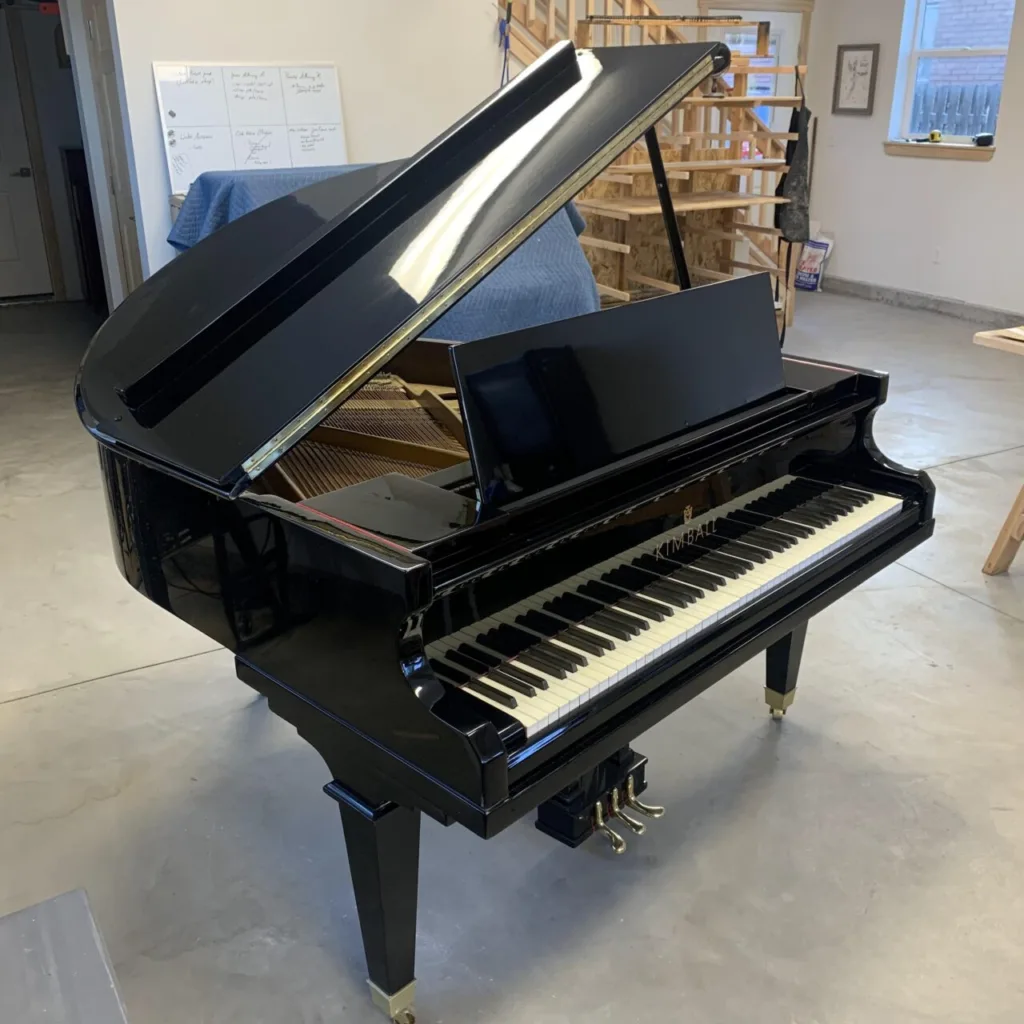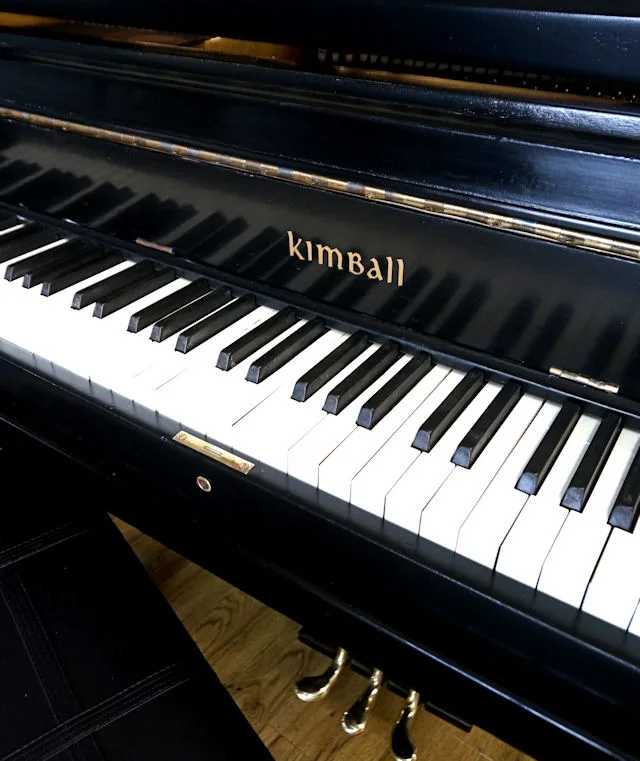Are you in the market for a used piano and considering a Kimball brand? Or maybe you’ve inherited one and are wondering if it’s worth any money. Either way, finding out the value of a used Kimball piano can be confusing. I know- as an avid musician and self-proclaimed piano enthusiast, I’ve been through my fair share of buying and selling pianos. And let me tell you, there’s more to determining the value of a used piano than just age or appearance.
In this article, we’ll dive into the factors that determine the value of a used Kimball piano, including its history and condition. We’ll also discuss how you can accurately assess these factors yourself so you can make an informed decision when purchasing or selling a used Kimball piano. So whether you’re looking to buy or sell one, keep reading to find out everything you need to know about the value of a used Kimball piano!
So, Used Kimball Piano Value?
The value of a used Kimball piano can vary depending on its age, condition, and any unique features it may have. Generally speaking, a well-maintained and fully functional Kimball piano can range from $500 to $2,000. However, prices can also go higher for rare or antique models. It is always best to consult with a professional appraiser or do thorough research before buying or selling a used Kimball piano to ensure you are getting the most accurate value.
Understanding the History of Kimball Pianos
Kimball Pianos have a rich history that weaves together craftsmanship, innovation, and artistry. It all began in 1857 when William Wallace Kimball started the company in Chicago. Initially focusing on selling other manufacturers’ pianos and organs, Kimball quickly realized the potential of producing his own instruments. By the late 1800s, he transitioned into manufacturing, creating pianos renowned for their quality and appeal.
The early 20th century marked an era of tremendous growth for Kimball Pianos. With advances such as innovative soundboards and refined tone control, they became a household name across America. The brand’s commitment to excellence was evident in every detail—from the intricately designed cabinetry to the meticulously tuned strings. During this period, Kimball Pianos were often considered a status symbol; owning one signified taste and sophistication.
- Craftsmanship: Skilled artisans created each piano by hand.
- Tonal Quality: Known for their warm tones and rich sounds.
- Aesthetic Appeal: Elegant designs that complemented any home decor.
After World War II, demand surged again as music lovers sought out durable yet beautiful instruments while rebuilding their lives post-war. Despite facing numerous challenges over decades—like economic downturns or shifting musical trends—Kimball retained its reputation through unwavering dedication to superior production standards.
The journey of these extraordinary pianos is more than just historical—it’s about human passion driving timeless creations that continue enchanting generations today.
Assessing the Condition of a Used Kimball Piano
When it comes to assessing the condition of a used Kimball piano, several factors come into play. First and foremost, you’ll want to inspect its exterior appearance. Look for any signs of wear and tear such as scratches, dents, or fading in the wood finish. These cosmetic issues can sometimes indicate how well the instrument has been cared for over time. Open the lid and take a peek inside; you should be able to see if everything looks clean and intact. If there’s noticeable dust build-up or rust on metal parts like tuning pins or strings, this could signify neglect.
Next up is testing its sound quality which truly reveals its condition beneath the surface. Sit down at the keyboard and play through each note from one end to another—listen carefully for any unusual sounds like buzzing or rattling that might point toward internal damage. Pay close attention to:
- Tuning stability: Does it stay in tune?
- Key response: Are they even when pressed? Any sticky keys?
- Peddle function: Do they work smoothly without squeaks?
A musically trained ear will catch nuances an amateur might miss, so consulting with a professional tuner before making your purchase could save you future headaches—and some money!
Read also: bass guitar yamaha
How Age and Model Impact a used Kimball Piano’s Value
When it comes to the value of a used Kimball piano, both age and model play crucial roles. Older pianos can be like fine wine—aging with grace if they’ve been taken care of properly. But let’s not romanticize too much; an old piano that’s been neglected won’t have the same allure. The year it was made impacts its materials and craftsmanship, which means if your Kimball is from a golden era known for high-quality production, it’ll naturally fetch more money.
On the flip side, specific models also bring their own flair to the table. Some Kimball models are simple yet elegant and designed for homes or small venues. Others are grander in scope, meant for concert halls or serious musicians who demand top-notch sound quality. Just like cars, some models become classics over time while others fade into obscurity. Imagine this: owning a rare model that collectors seek out can skyrocket your piano’s worth.
So what should you look for?
– Check serial numbers.
– Research manufacturing years.
– Understand model-specific features.
This combo of factors will give you a good sense of where your piano stands on the market ladder.
Whether you’re looking to sell or simply curious about what you’ve got sitting in your living room, knowing these details can make all the difference!
Effect of Market Demand on the Value of Used Kimball Pianos
The value of used Kimball pianos can fluctuate quite a bit depending on market demand. When many people are interested in purchasing a piano, the prices naturally go higher. This happens because there’s more competition among buyers, and sellers know they can ask for more money. You might find that during holiday seasons or when music programs start up in schools, there’s an uptick in interest. This increased desire directly impacts how much someone is willing to pay for a classic Kimball piano.
On the flip side, if fewer people are looking to buy pianos, you may see prices drop significantly. Think about it this way: If you’re selling lemonade but nobody’s thirsty, you’ll probably need to lower your price just to make a sale. The same goes for these musical instruments. Factors like economic downturns or changes in musical trends can lead to decreased interest and consequently lower values for used pianos.
- Seasonal fluctuations
- Economic conditions
- Trends in music education
These variables all play critical roles. So if you’re thinking of buying or selling a used Kimball piano, it’s smart to keep an eye on current market trends and act accordingly.
Understanding these dynamics helps both buyers and sellers make informed decisions.
You may also like: what is a prepared piano

Ways to Get an Accurate Evaluation for Your Used Kimball Piano
When it comes to figuring out how much your used Kimball piano is worth, there are a few key steps that can help you get a fair and accurate evaluation. First off, have an expert take a look at it. A professional appraiser knows the ins and outs of pianos and can give you detailed information about its condition, age, and overall value. They might check things like the quality of the wood, the state of the strings, or even listen for any off notes when it’s played.
Another step that shouldn’t be overlooked is doing some research yourself. You might want to compare similar models online to see what they’re selling for on websites like eBay or specialized piano forums. This will give you a ballpark figure of what people are willing to pay for pianos in similar conditions. Additionally:
- Check local classified ads
- Visit music stores
- Look into auction results
These sources can offer great insights into current market trends.
Lastly, don’t forget to consider getting multiple opinions if possible—different experts may notice different details or have varied perspectives on your piano’s worth. By gathering all this information together, you’ll be well-equipped to understand exactly how much your beloved Kimball piano should fetch if you decide it’s time for it to find a new home.
Conclusion: Making Informed Decisions about Buying or Selling a Used Kimball Piano
When considering the purchase or sale of a used Kimball piano, there are several key factors to keep in mind to ensure you make an informed decision. First and foremost, examine the condition of the piano thoroughly. Look for signs of wear such as dents, scratches, or chipped keys. It’s also important to inspect the internal components: soundboard, strings, and hammers should all be in good shape. Don’t forget to listen closely when someone plays it—any buzzing or unusual noises could indicate deeper issues.
Additionally, take into account the history of the instrument. Knowing how often it was played and whether it’s been well-maintained can provide invaluable insight into its longevity and performance quality. If possible, obtain records of past tunings and repairs from previous owners.
Factors like these not only affect your enjoyment but also influence resale value down the line.
If you’re leaning towards selling your Kimball piano,
- accurate pricing
- aesthetic presentation
- detailed descriptions online can attract potential buyers.
Consider hiring a professional appraiser if you’re uncertain about its current market value; this small investment could lead to a better final price.
In conclusion, making informed decisions regarding buying or selling a used Kimball piano requires careful attention to detail—from physical condition checks to understanding its historical use—all aimed at ensuring both satisfaction and smart financial choices.

